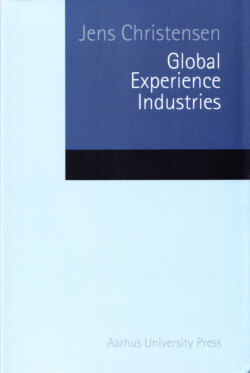Читать книгу Global Experience Industries - Jens Christensen - Страница 15
На сайте Литреса книга снята с продажи.
The Tourism Economy and Tourism Industry
ОглавлениеSince the 1960s, tourism has grown in step with general economic developments, except somewhat faster, and it is projected to continue growing at the same pace.
Mass tourism, as it is known today, began in the 1960s and continued to expand hereafter. Wealth and technology enabled millions of people to travel at home and abroad by car and airplane. Since the 1960s, the tourism industry accounted for 3 to 4 percent and the broader tourism economy for 10 percent of world GDP, export and employment. Everything indicates that this will continue in the future, and maybe even accelerate. In 2005, the world tourism economy totalled about 5000 $bn and the tourism industry about 1700 $bn (Figure 3).
Primarily, the tourism industry includes activities related to travel and stay. Also included, are governmental expenses to cultural institutions, parks and other direct tourism-related activities and, finally, tourist shopping. Personal vacation travel makes up about 80 percent and business travels about 20 percent of all expenses. In addition, the tourism economy includes all indirect private and public expenses and investments which enable tourism to take place (Figure 4).
FIGURE 4 The Tourism Industry and Economy Flows
Source: EU (2002). Structure, Performance and Competitiveness of European Tourist Enterprises, 6.
Tourists spend more money at home than abroad. However, since the 1970s international tourism spending has increased much more than domestic tourism and the two numbers are approaching each other. While international tourism spending accounted for less than 10 percent of total tourism revenues in 1970, its share increased during the next two decades to 30 percent in 1990 and 40 percent in 2005 (Figure 5). The difference between domestic and international tourism spending varies a lot from country to country, just as developed countries spend much more on tourism compared to developing countries. The North Europeans spend more on international tourism than on domestic tourism, for example, while USA spends five times as much at home than abroad. Although climate and access to sun and beach seem to be the most important factors driving world tourism, the rise of one day and short-term vacations means that shopping, visits to family and friends as well as city tourism, make up an increasing share of total tourism spending.
FIGURE 5 Global Domestic and International Tourism in $bn, 1970-2015
Source: UNTWO. Historical Perspective of World Tourism. WTTC. The 2007 Travel & Tourism Economic Research. Numbers are estimated.
Looking at ways of traveling, cars and airlines dominate completely. In the US, the car is the most important means of transportation for vacations, because here short term vacations prevail. The car is also important in Western Europe as a means of tourism transportation, but the longer vacations in this region means that flying plays a greater role. Ferries, trains and busses are of much less significance.8
FIGURE 6 The Tourism Economy and Industry of the World’s Largest Tourist Countries in $bn, 2005
Source: WTTC. The 2007 Travel & Tourism Economic Research.
The US tourism sector is by far the largest in the world, making up a quarter of total tourism economy and industry (Figure 6). There is quite a gap down to number two, Japan, with an 8 percent global share, followed by China and the five large West European tourist countries, Germany, UK, France, Italy and Spain of 4 to 6 percent. China has just recently joined the top ten and rapidly moved into third place. The ten largest tourist countries account for 70 percent of total world tourism spending. As we shall see later on, the world tourism industry that provides travel services is completely dominated by companies in developed countries.
FIGURE 7 High Income and Low Income Countries’ Share of World Tourism in $bn, 2005 and 2015
Source: WTTC. The 2007 Travel & Tourism Economic Research.
To a high degree, world tourism deals with travelling in and between developed and high income countries, although emerging countries such as China and Mexico have fueled non-Western tourism (Figure 7). The growing desire of middle classes to travel has increased the economic importance of tourism in developing countries, mainly emerging countries. In relative terms, tourism is growing more rapidly in developing countries than in developed countries. Political stability and good infrastructure are a precondition everywhere for extending tourism.
In numbers, revenues of the global tourism industry have increased from $875 bn in 1990, to $1700 bn in 2005 and a projected $2590 bn in 2015 (Table 3).
TABLE 3 The Global Tourism Industry in $bn, 1990-2015
Source: UNWTO. Historical Perspective of World Tourism. WTTC. The 2007 Travel & Tourism Economic Research. My predictions are not as optimistic as. WTTC. Numbers are rounded.
